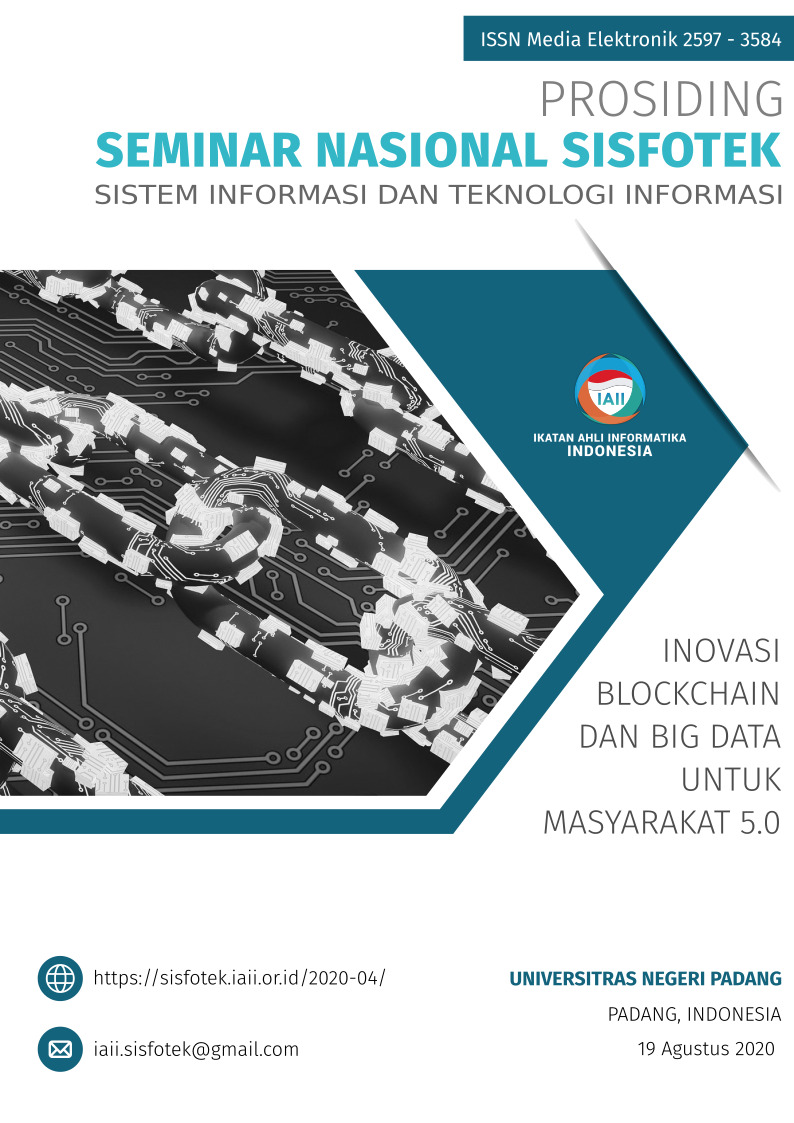Segmentasi Loyalitas Pelanggan Berbasis RFM (Recency, Frequency, Monetary) Menggunakan K-Means pada PD. Persada Ikan
Keywords:
RFM, k-means, loyality, segmentation.Abstract
Customer loyalty for the company is very important if the competition between similar companies is high enough which results in a threat to the company. Customer loyalty is very useful to determine the level of customer loyalty to the company. Customer segmentation is also needed to group customers who have the same characteristics into one so as to simplify the management process. The analysis used is the RFM (Recency, Frequency, Monetary) model to analyze customer buying behavior in terms of Recency (last transaction time span), Frequency (number of transactions), and Monetary (rupiah issued). The grouping method used is K-Means. The data used in this study are historical data on fish feed purchases from 2015 to 2017. The application of RFM analysis and the K-Means method resulted in 4 clusters based on Elbow calculations. The results in this study obtained the number of objects in cluster 1 as many as 142 customers, cluster 2 as many as 28 customers, cluster 3 as many as 41 customers and cluster 4 as many as 41 customers. The accuracy level of the cluster is measured using Silhoutte Coeffisien with results close to 1 which means the clustering is quite good. The interpretation of the RFM shows that 16.27% of customers have a high potential for loyalty, while 11.11% of customers have the potential as loyal customers, and the remaining 56.35% have a low level of loyalty. It can be concluded that this research can classify the level of customer loyalty using RFM analysis and the K-Means algorithm.
References
H. C. Chang and H. P. Tsai, “Group RFM analysis as a novel framework to discover better customer consumption behavior,” Expert Syst. Appl., vol. 38, no. 12, pp. 14499–14513, 2011.
B. E. Adiana, I. Soesanti, and A. E. Permanasari, “Analisis Segmentasi Pelanggan Menggunakan Kombinasi RFM Model dan Teknik Clustering,” J. Terap. Teknol. Inf., vol. 2, no. 1, pp. 23–32, 2018.
I. Soesanti, “Web-Based Monitoring System On The Production Process Of Yogyakarta Batik Industry,” J. Theor. Appl. Inf. Technol., vol. 87, no. 1, pp. 146–152, 2016.
F. Hadi, M. Mustakim, D. O. Rahmadia, F. H. Nugraha, N. P. Bulan, and S. Monalisa, “Penerapan K-Means Clustering Berdasarkan RFM Mofek Sebagai Pemetaan dan Pendukung Strategi Pengelolaan Pelanggan (Studi Kasus: PT. Herbal Penawar Alwahidah Indonesia Pekanbaru),” J. Sains dan Teknol. Ind., vol. 15, no. 1, pp. 69–76, 2017.
A. D. Savitri, F. A. Bachtiar, and N. Y. Setiawan, “Segmentasi Pelanggan Menggunakan Metode K-Means Clustering Berdasarkan Model RFM Pada Klinik Kecantikan ( Studi Kasus?: Belle Crown Malang ),” vol. 2, no. 9, pp. 2957–2966, 2018.
S. Monalisa, “Segmentasi Perilaku Pembelian Pelanggan Berdasarkan Model RFM dengan Metode K-Means,” vol. 2, no. 1, pp. 9–15, 2018.
D. Yanto and Jamal, “Analisis RFM dan Algoritma K-Means untuk Clustering Loyalitas Customer,” vol. 9, no. 1, pp. 0–8, 2019.
H. Güçdemir and H. Selim, “Integrating multi-criteria decision making and clustering for business customer segmentation,” Ind. Manag. Data Syst., vol. 115, no. 6, pp. 625–645, 2015.
D. S. Wardiani and N. Merlina, “Implementasi Data Mining untuk Mengetahui Manfaat RPTRA menggunakan Metode K-means Clustering,” PILAR, vol. 15, no. 1, pp. 125–132, 2019.
M. Anggara, H. Sujiani, and N. Helfi, “Pemilihan Distance Measure Pada K-Means Clustering Untuk Pengelompokkan Member Di Alvaro Fitness,” J. Sist. dan Teknol. Inf., vol. 1, no. 1, pp. 1–6, 2016.
Y. H. Chrisnanto and A. Kanianingsih, “Pengelompokan Ekuitas Pelanggan Berbasis Recency Frequency Monetary ( RFM ) Menggunakan K-Means Clustering,” vol. 2019, no. Sentika, pp. 13–14, 2019.
Downloads
Published
How to Cite
Issue
Section
License
Copyright (c) 2020 Prosiding SISFOTEK

This work is licensed under a Creative Commons Attribution 4.0 International License.
http://creativecommons.org/licenses/by/4.0







